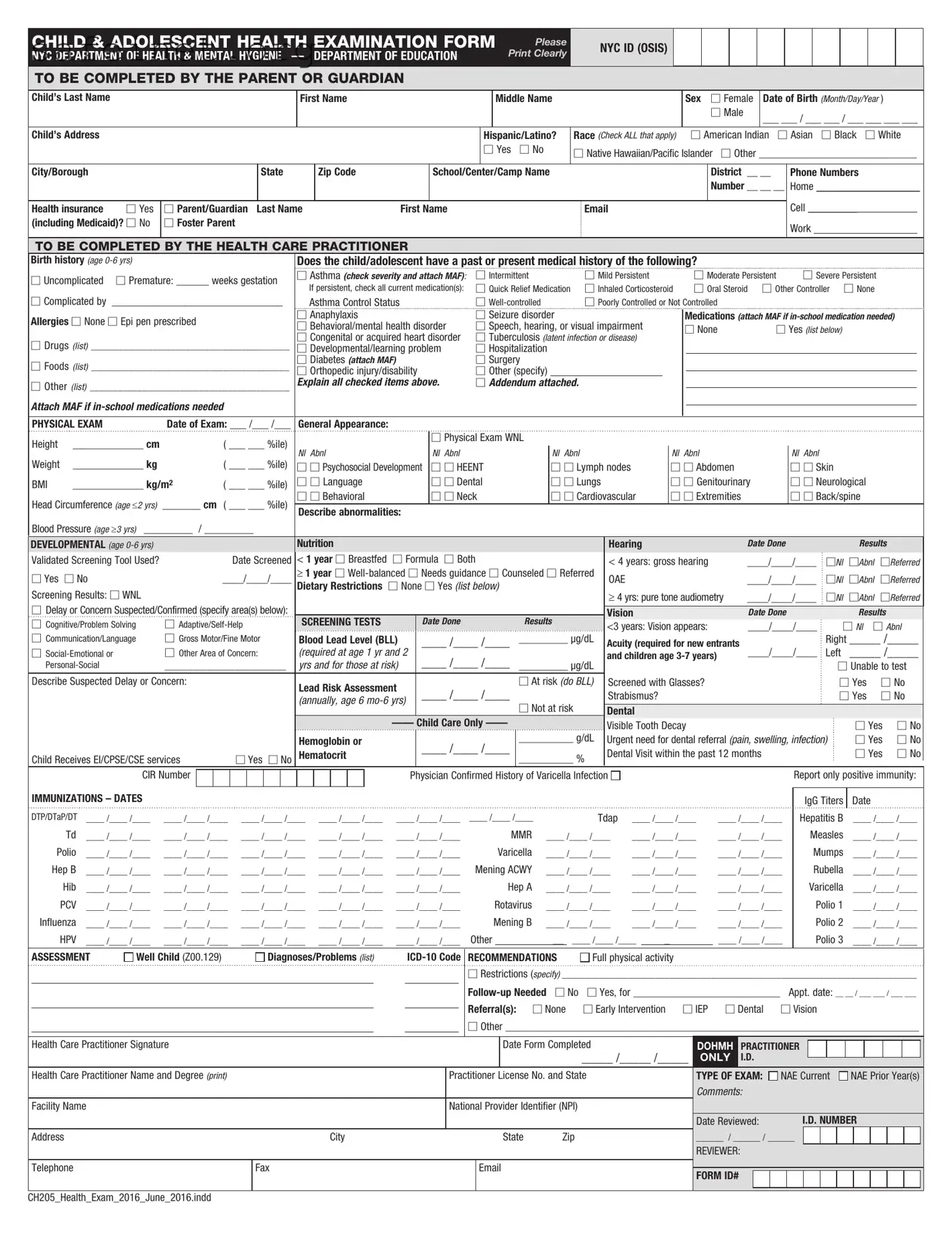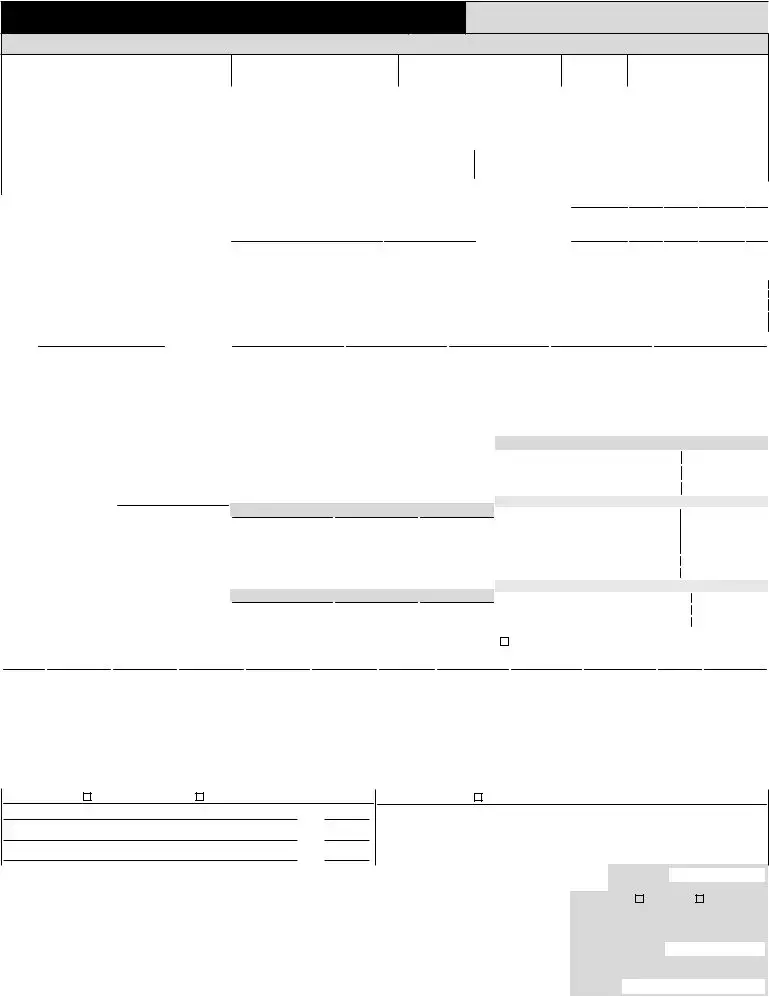What is the purpose of the Child Adolescent Health form?
The Child Adolescent Health form is designed to gather comprehensive health information about children and adolescents. It aids health care practitioners in assessing a child's health status, identifying potential issues, and ensuring that appropriate support services are available. The form is useful for schools, camps, and other settings where child welfare is a priority.
Who needs to complete the Child Adolescent Health form?
The form should be completed by a parent or guardian of the child. This includes natural parents, step-parents, or legal guardians. Foster parents can also fill it out. Accurate and complete information is essential for proper assessment and care.
What information is required from parents or guardians?
Parents or guardians need to provide essential details like their child's name, date of birth, address, school, and contact information. They will also indicate the child's health insurance status, ethnicity, and any notable medical history. This foundation helps health care providers offer tailored care.
What medical history details are requested on the form?
The form asks about significant medical history, such as past conditions like asthma, diabetes, allergies, and psychiatric issues. It also requires information about any past surgeries, hospitalizations, and developmental or learning issues. Providing this information enables better health management and intervention when necessary.
How is the physical exam section structured?
The physical exam section allows health care practitioners to assess various aspects of a child's health, including general appearance, height and weight percentiles, and specific system checks (like lungs and cardiovascular health). This part helps to establish a baseline and identify any abnormalities.
What developmental screenings are included in the form?
Developmental screenings assess different areas of a child's growth, including nutrition, hearing, vision, and cognitive development. The form also checks for any immediate concerns or indicators that could lead to further evaluation. These screenings help ensure that children are developing at a healthy pace.
What immunization records need to be provided?
The form requires detailed immunization history, listing dates for various vaccinations like DTP, MMR, and Polio. This information is crucial to ensure that children receive all necessary immunizations for their age, helping to prevent the spread of infectious diseases in schools and communities.
What happens after the form is completed?
Once the form is filled out, it should be submitted to the designated health care practitioner or school authority. They will review the information, conduct a health examination, and may recommend further follow-up or referrals if needed. This process supports ongoing monitoring of the child's health.
Can the form be updated if the child's health status changes?
Yes, the form can and should be updated if there are significant changes in the child's health, such as new diagnoses, changes in medications, or new allergies. Keeping this information current is vital for ongoing health management and transparency with healthcare providers.
Where can parents or guardians obtain the Child Adolescent Health form?
The Child Adolescent Health form is usually available through schools, health care providers, and the NYC Department of Health and Mental Hygiene. You can also download the form from official health department websites. Be sure to use the latest version for the most accurate and relevant information.


